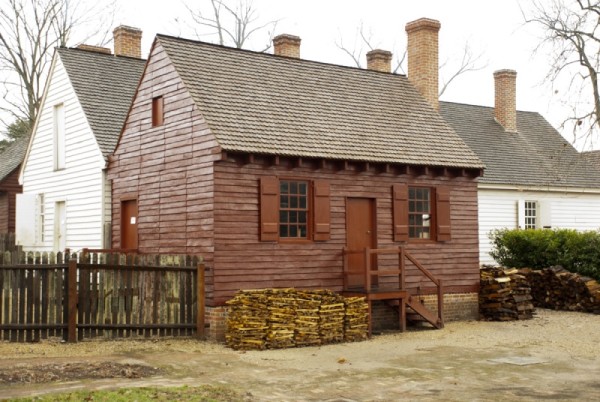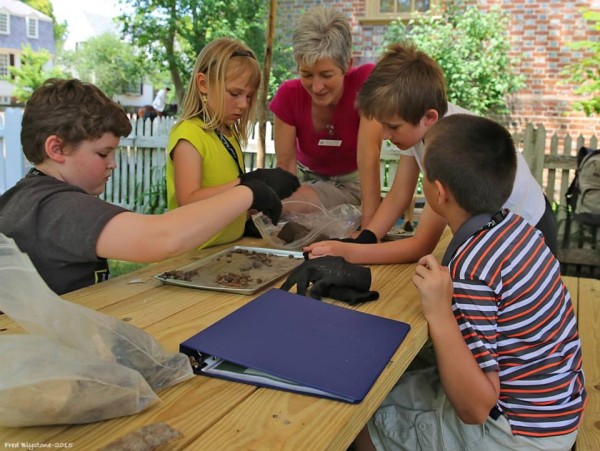 Popular culture has a way of romanticizing archaeology. Just think about it. In the movies—misty, remote, and exotic sites are explored by archaeologists who are rugged, yet inexplicably well-manicured. They extract glittering artifacts from the ground in adrenaline-fueled moments. It’s exciting stuff! …
Popular culture has a way of romanticizing archaeology. Just think about it. In the movies—misty, remote, and exotic sites are explored by archaeologists who are rugged, yet inexplicably well-manicured. They extract glittering artifacts from the ground in adrenaline-fueled moments. It’s exciting stuff! …
Name That Archaeological Site!
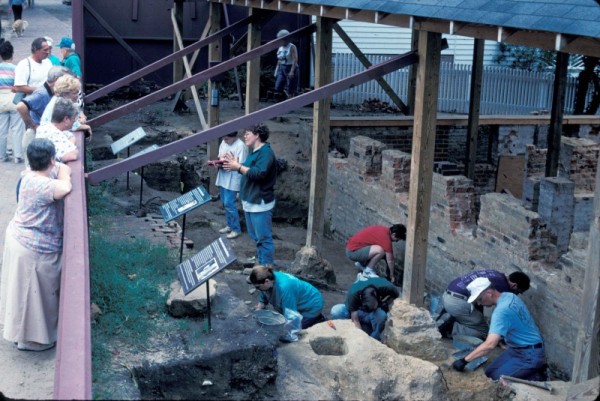
Round One of “Name that Archaeological Site” was so much fun that we’ve decided to launch a second round for Throwback Thursday! Below are images of four archaeological excavations within Colonial Williamsburg’s Historic Area. See if you can identify the site. We’ll begin with an easy one……
…
Before the Tavern …
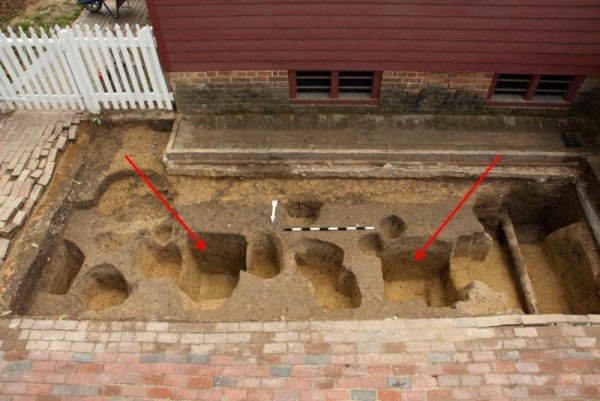
These two substantial postholes are part of an “earthfast” building that pre-dates Wetherburn’s Tavern.
Two weeks ago we profiled our recent investigation of a Revolutionary War era porch across the front of Wetherburn’s Tavern, and hinted at another important discovery made during our fieldwork. We are now ready for the big reveal….wait for it….a previously undocumented early 18th-century building pre-dating Wetherburn’s Tavern!
…
Archaeologic Blog: Wetherburn’s Tavern Porch
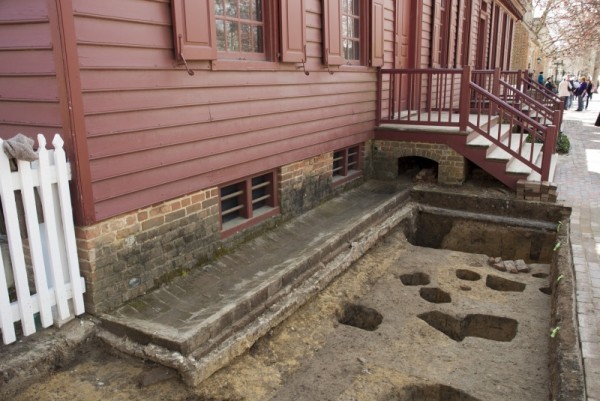
Among the signs of spring in the Historic Area is the return of archaeologists to the field. Beginning in March, visitors may have noticed a small excavation along Duke of Gloucester Street in front of Wetherburn’s Tavern. Want to know why archaeologists picked that spot, and what they found? Read on:
…
Name that Archaeological Site!
For this (Throwback) Thursday, an archaeological game: Below are images of three sites that were excavated within Colonial Williamsburg’s Historic Area. Two of the images include landmarks that should help identify the location. The third image is of an “iconic” discovery. Care to try your luck guessing the sites? And for any over-achievers out there, try naming the decade. How well do you know your Colonial Williamsburg Archaeology?
Image #1: What site is this?
…
Animal, Mineral or Vegetable?
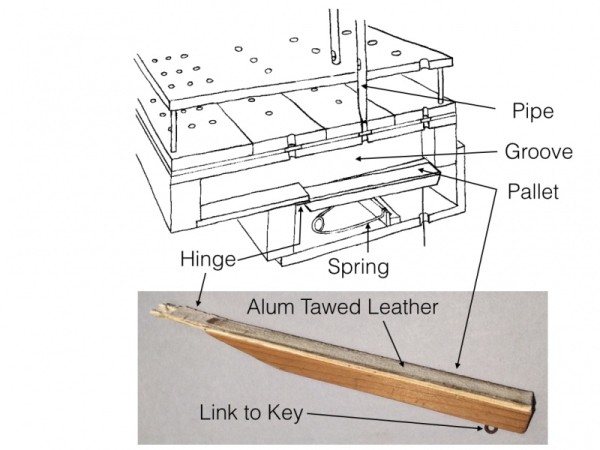
Wind-chest diagram (above) and actual pallet (below)
When working on the wind-chest, John and Lou noticed a white powder coming from the pallet valve leather – not a normal occurrence. This immediately raised questions for us. Was this a sign of deteriorating leather, necessitating replacement, or something more benign? Could the white powder be historical evidence, perhaps a 1799 method of helping the leather serve as a gasket? If so, it should be preserved.
…
What’s in a Name?
In 1932 Colonial Williamsburg architects uncovered the brick foundations of a 16 by 24-foot building on colonial lot 17, next door to James Anderson’s
…
Histories.
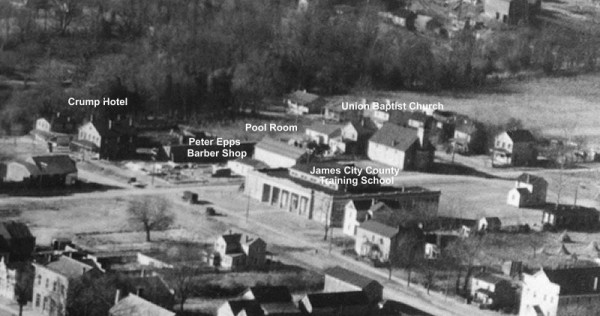
Detail of a 1928 Arial photograph showing Nicholson Street (diagonal) at Botetourt.
When we talk about history at Colonial Williamsburg, it’s the 18th century that comes first to mind. While the 18th century is certainly our research and interpretive focus, archaeologists spend a great deal of time (literally) sifting and sorting through evidence of other historic periods. It is simply the nature of our work. As we progress through successive accumulated soil layers, the excavation process reminds us that we are not uncovering history, but rather “histories”.
…
Places We’ve Been and Some Things We Have Found in 2014
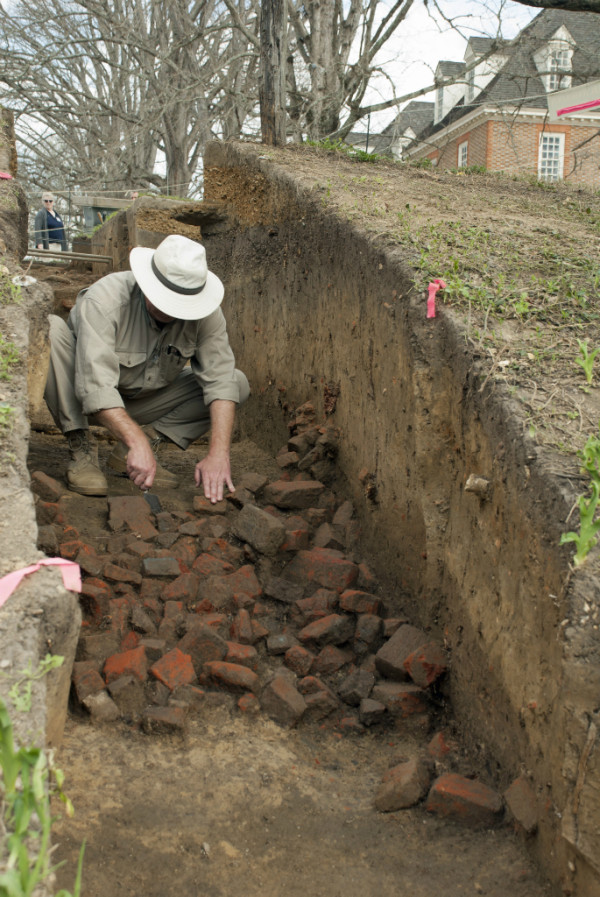 This has been an exciting year for Colonial Williamsburg archaeologists. In case you missed it, here are a few of the highlights. Click on the images for a better view, and for a bit of text describing the action. Happy New Year!
This has been an exciting year for Colonial Williamsburg archaeologists. In case you missed it, here are a few of the highlights. Click on the images for a better view, and for a bit of text describing the action. Happy New Year!
…
Taking a Closer Look
 I spent much of this morning peering through a microscope at a little lump of corrosion that got smaller and smaller as I carefully picked away at it with a scalpel, until slowly it became identifiable as a coin. Unfortunately, at the end of all my work it was not particularly easy to tell whose coin it was….
I spent much of this morning peering through a microscope at a little lump of corrosion that got smaller and smaller as I carefully picked away at it with a scalpel, until slowly it became identifiable as a coin. Unfortunately, at the end of all my work it was not particularly easy to tell whose coin it was….

